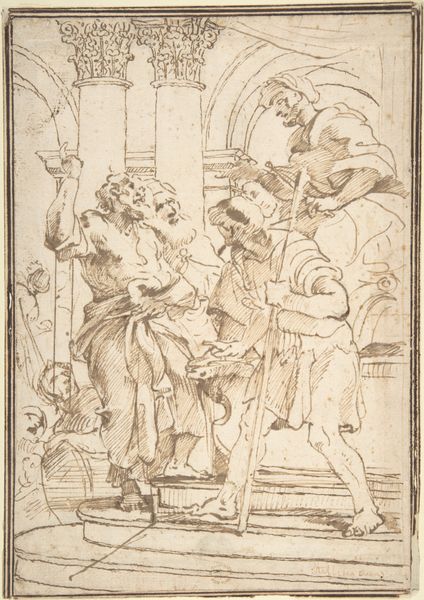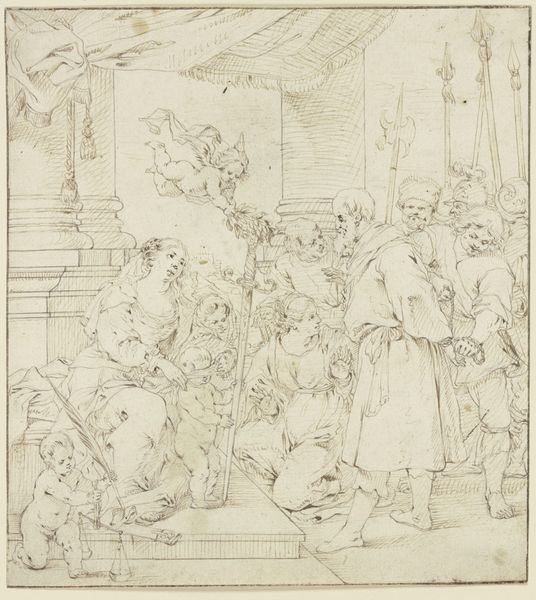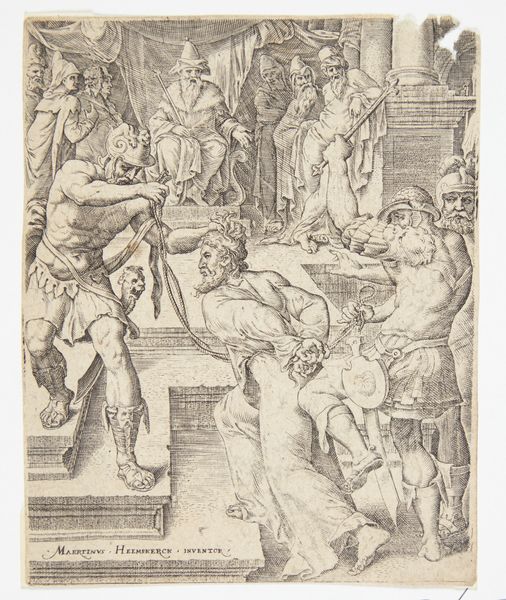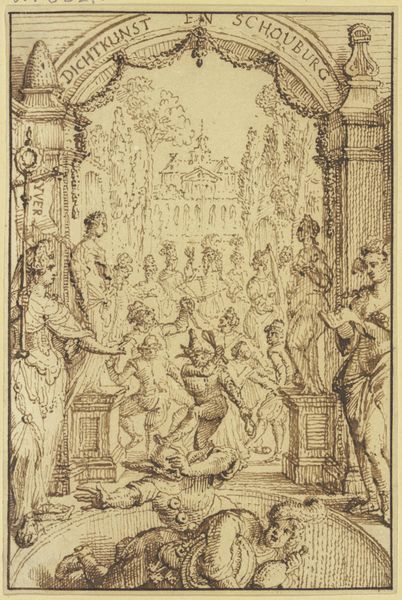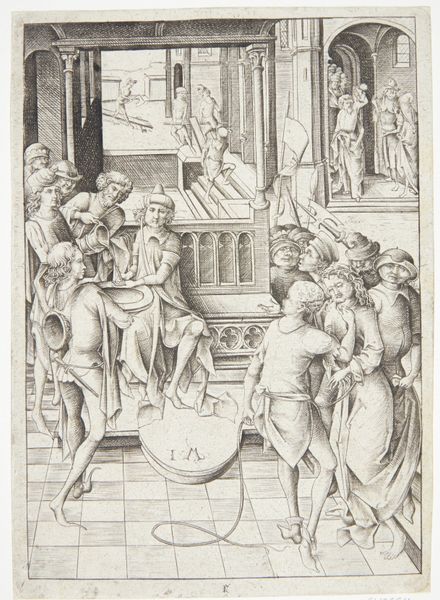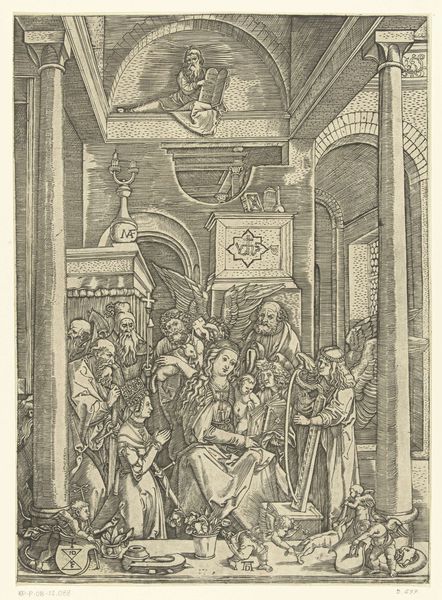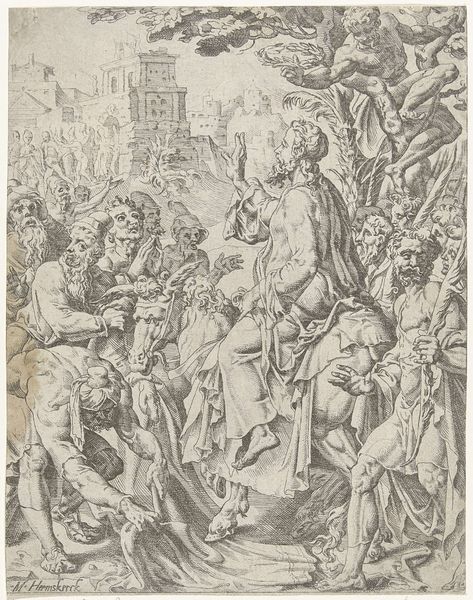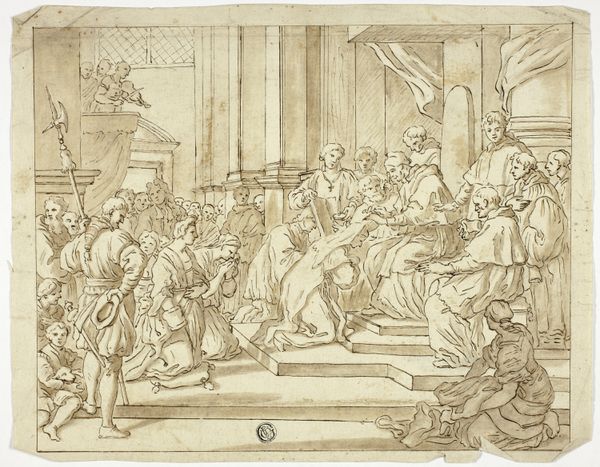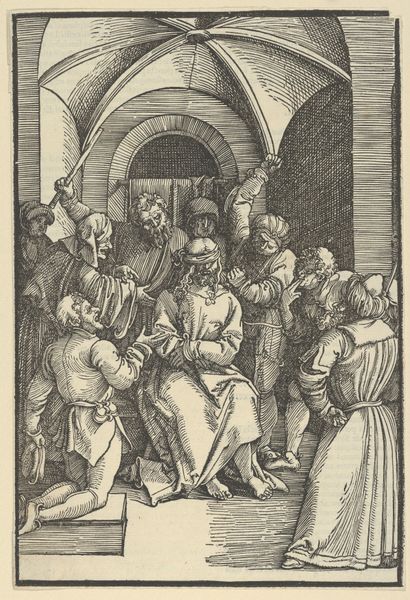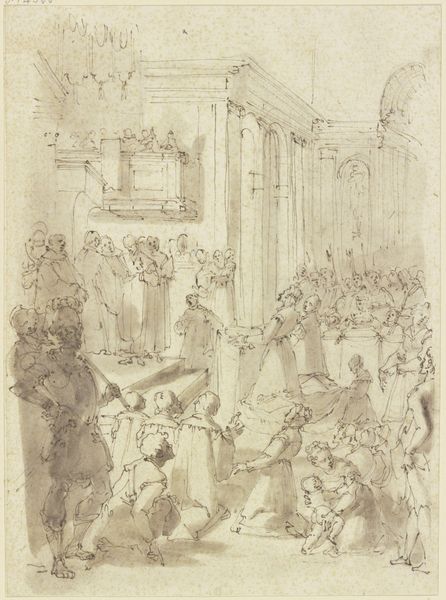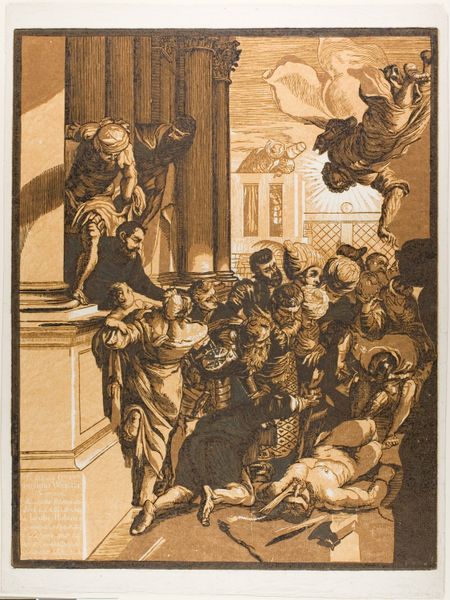
drawing, ink
#
portrait
#
drawing
#
baroque
#
figuration
#
ink
#
genre-painting
Copyright: Public Domain
Curator: This is Romeyn de Hooghe’s “d’Hollandsc Fransman,” a drawing rendered in ink. The artwork is currently held in the Städel Museum. What is your immediate impression? Editor: Chaotic! But in a controlled way. The artist masterfully uses line work to convey depth and movement within a tightly packed scene. I’m curious about the physical process, the hand and tool creating this detailed, layered world. Curator: Indeed. Its composition reveals much about social dynamics of its time, specifically how gender, class and national identities are performed and observed. Consider how the artist places particular figures within the crowd, who is doing what, and what social rituals are being portrayed. This brings up complex issues concerning Dutch and French identity. Editor: Absolutely. And the choice of ink, likely iron gall, speaks to accessibility and cost. De Hooghe uses simple, readily available material, yet crafts an image of considerable societal commentary. One must also consider the labor involved—the hand meticulously shaping lines to portray fabric, facial expression, and atmosphere. Curator: I read it through the lens of performance and power. Note the figures on the elevated platform, perhaps a stage, peering down, suggesting the scrutinizing gaze of the elite. Also, note the gaze of the figures and how their postures relate to a power structure in performance. This could reflect complex issues in the representation of cultural otherness. Editor: True. The layers here reveal much about access, from raw materials to class representation. This piece offers rich insights into how art operates within and comments on the social fabric of the time through its very making and the world it represents. Curator: Ultimately, “d’Hollandsc Fransman” provides a critical visual vocabulary for dissecting cultural interactions in the Baroque era and beyond. The gaze presented invites us to deconstruct representations of identity and societal roles that remain relevant. Editor: For me, understanding the making and material situates these narratives in a world of production and consumption. Every stroke reflects a conscious decision tied to resources, labor, and societal norms. These combined narratives can promote rich historical consideration for diverse audiences.
Comments
No comments
Be the first to comment and join the conversation on the ultimate creative platform.

